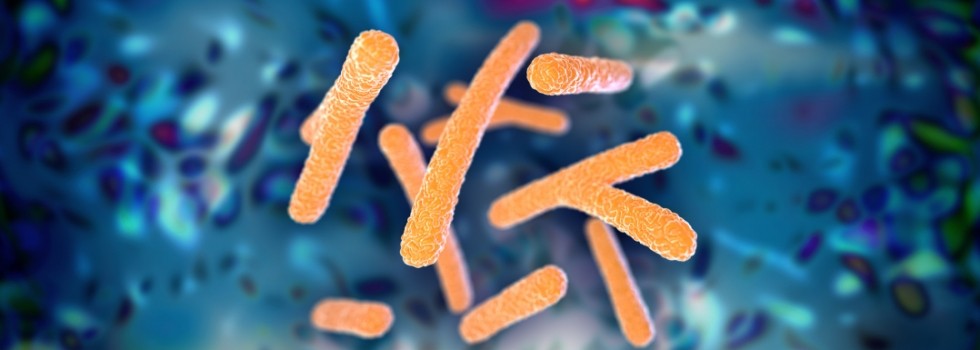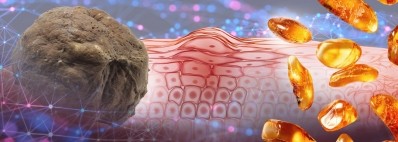Promotional Features
Postbiotics: Setting the record straight for three common myths
Ongoing scientific discoveries surrounding the human microbiome and its critical role in supporting overall health has generated an abundance of lively discussion and exciting inquiry.
With new discoveries often come popularized misconceptions and misinformation. Such is the case with postbiotics, which, until recently did not have an official definition. The following aims to define postbiotics, briefly address three commonly held myths, and introduce a variety of specific health benefits.
To understand postbiotics one must begin with probiotics. Probiotics are defined as ‘live microorganisms that can benefit the host when consumed in sufficient amounts'.1 However, research suggests that the health benefits may not solely come from the live bacteria themselves, but also from the byproducts and components they produce.
These byproducts, which include bacterial metabolites, cell fragments, and other non-living bacterial components, are collectively called ‘postbiotics’ by the International Scientific Association for Probiotics and Prebiotics (ISAPP). Postbiotics are now recognized as potentially playing a key role in the health-promoting effects previously attributed solely to probiotics.2
Myth 1: Postbiotics are dead bacteria without biological activity
Fact: Postbiotics are treasure troves of health-promoting elements
"Postbiotics are like hidden gems in the gut health world. Don't be fooled by misconceptions – they're not just dead bacteria! Packed with beneficial compounds from powerful microbes, postbiotics offer unique advantages,” states Dr. Rishi Trivedi of Vidya Herbs.
In the past, there were various definitions of postbiotics, which might explain this first misconception. The latest definition from the ISAPP states that a postbiotic is ‘a preparation of inanimate microorganisms and/or their components that confers a health benefit on the host’.
While ‘inanimate’ technically means dead, postbiotics are far from biologically irrelevant. They can be packed with beneficial components left behind by the bacteria, even after the bacteria themselves are no longer alive. These components include:
- Metabolites Chemicals produced by the bacteria during their growth and fermentation. Some metabolites, like short-chain fatty acids, have been shown to have health benefits.
- Cell wall fragments These can help stimulate the immune system or act as a nutrient source for the good bacteria already living in your gut.
- Other cellular materials Even parts like organelles or membrane vesicles can have biological activity and contribute to postbiotics' health effects.
Myth 2: Postbiotics are measured with CFUs
Fact: Since postbiotics are inanimate, they must be measured with other methods
Enumerating postbiotics and labeling them with a Colony Forming Unit (CFU) count can be confusing because CFU is typically used for live probiotics. Here is why it does not work for postbiotics:
- CFU counts living things CFU measures the number of live bacteria that can multiply and form colonies on a special plate.
- Postbiotics are inactive Since postbiotics are essentially inactivated bacteria, they cannot grow on a plate. Considering this, a CFU count for a postbiotic would be nearly indetectable, even though the postbiotic might be perfectly effective.
So, how do we measure postbiotics? One technique that scientists are using to measure cellular components in postbiotics is called flow cytometry. This method can analyze individual particles, even dead cells, and provide a more accurate assessment of a postbiotic's components. In short, CFU is for counting live bacteria, while flow cytometry is a better tool for understanding a postbiotic’s efficacy.3,4
Myth 3: All postbiotics deliver the same health benefits
Fact: Postbiotics function in a variety of ways depending on certain factors
While postbiotics share some general properties, their function is more nuanced. The specific health effects of a postbiotic depend on two key factors:
- The original bacteria Different strains of bacteria produce different metabolites and have unique cell wall components. So, a postbiotic derived from Lactobacillus acidophilus will likely have different benefits than one obtained from Bifidobacterium bifidum since they are different types of bacteria.
- The inactivation method How the bacteria are inactivated can also influence the final probiotic function. For example, heat treatment may damage some beneficial components, while chemical treatment might leave them intact.
Therefore, in order to accurately identify a postbiotic’s health benefits, one must investigate the original bacterial strain and the inactivation method used.
Figure 1: Postbiotics and their therapeutic effects on a variety of physiological processes
What are the health benefits of postbiotics?
Vidya Herbs, a globally recognized manufacturer of premium, sustainable probiotics, offers five major strains with demonstrated efficacy as potential postbiotic formulations; B. coagulans, B. clausii, B. subtills, L. plantarum and A. muciniphila. These all exhibit various health benefits, as following:
Immune system modulation Postbiotics can help control and strengthen the immune system by increasing cytokine synthesis and immune cell activity, including macrophages and natural killer cells.5
Anti-inflammatory effects Studies have shown that postbiotics can reduce inflammation in the gut and other regions of the body by blocking proinflammatory cytokines and pathways.5
Antimicrobial and antiviral properties Bacteriocins and organic acids are examples of postbiotics that can impede the growth of pathogenic bacteria, viruses, and fungi, hence aiding in infection prevention and treatment.5
Antidiarrheal effects Postbiotics have been shown to help treat diarrhea, possibly by increasing intestinal barrier function, altering gut motility, and suppressing pathogenic bacteria.6
Metabolic benefits Certain postbiotics, such as short-chain fatty acids, have been related to improved glucose and lipid metabolism, which may lower the risk of obesity, type 2 diabetes, and metabolic syndrome.7
Gastrointestinal benefits Postbiotics can improve intestinal barrier function, lower intestinal permeability, and regulate gut motility, potentially helping illnesses such as inflammatory bowel disease (IBD), irritable bowel syndrome (IBS), and colitis.6
The therapeutic effects of postbiotics are driven by their ability to interact with the gut microbiota, alter immunological responses, and create bioactive compounds that have positive impacts on a variety of physiological processes shown in Figure 1.
Exciting possibilities for personalized health strategies
Postbiotics, once shrouded in misconception, are emerging as powerful allies in supporting gut health and overall wellbeing. Unlike probiotics, they are not live bacteria but rather the beneficial byproducts these microbes produce. By debunking common myths like the need for CFU counts and the one-size-fits-all approach, a clearer understanding of their potential is being realized.
With a diverse range of health benefits, from immune system modulation to metabolic advantages, postbiotics offer exciting possibilities for personalized health strategies. As research continues to unveil their potential, incorporating postbiotics into a health routine, alongside a balanced diet and healthy lifestyle, could be a valuable step towards optimal health.
These statements have not been evaluated by the Food and Drug Administration. This product is not intended to diagnose, treat, cure, or prevent any disease. Claims should be reviewed under the guidance of regulatory and/or legal counsel for compliance.References
1. Sanders, M.E.; Merenstein, D.J.; Reid, G.; et al. (2019) Probiotics and prebiotics in intestinal health and disease:from biology to the clinic. Nat Rev Gastroenterol Hepatol. 16, (10):605–616.
2. Żółkiewicz, J.; Marzec, A.; Ruszczyński, M.; et al. (2020). Postbiotics-A Step Beyond Pre- and Probiotics. Nutrients. 12(8):2189.
3. Eurofins. Case Study: Flow Cytometry for Postbiotic Enumeration.
4. Boyte, M.E.; Benkowski, A.; Pane, M.; et al. (2023). Probiotic and postbiotic analytical methods: a perspective of available enumeration techniques. Front Microbiol. 7;14:1304621.
5. Mosca, A.; Abreu, Y.; Abreu, A.T.; et al. (2022). The clinical evidence for postbiotics as microbial therapeutics. Gut Microbes. 14(1):2117508.
6. Asif, A.; Afzaal, M.; Shahid, H.; et al. (2023). Probing the functional and therapeutic properties of postbiotics in relation to their industrial application. Food Sci Nutr.;11(8):4472-4484.
7. Malagón-Rojas, J.N.; Mantziari, A.; Salminen, S.; et al. (2020). Postbiotics for Preventing and Treating Common Infectious Diseases in Children: A Systematic Review. Nutrients.12(2):389.
Additional references
Salminen, S.; Collado, M.C.; Endo, A.; et al. (2021). The International Scientific Association of Probiotics and Prebiotics (ISAPP) consensus statement on the definition and scope of postbiotics. Nat Rev Gastroenterol Hepatol 18, 649–667.
Carrie Dennett, MPH.; RDN, CD.; June/July 2022 Issue. Postbiotics: The Myths and Facts About Postbiotics. By Today’s Dietitian, Vol. 24, No. 5, P. 22.
Vinderola, G.; Danders, M.E.; Cunnigham, et al. (2024). Frequently asked questions about the ISAPP postbiotic definition. Front. Microbiol., Sec. Food Microbiology. Volume 14 - 2023.
Cousin, F.J.; Jouan-Lanhouet, S.; Dimanche-Boitrel, M.T.; et al. (2012). Milk fermented by Propionibacterium freudenreichii induces apoptosis of HGT-1 human gastric cancer cells. PLoS One. 2012;7(3):e31892.





